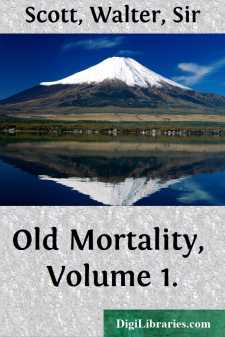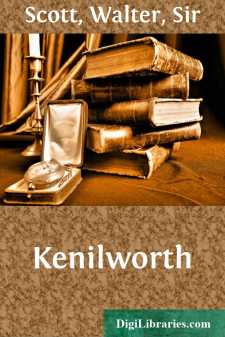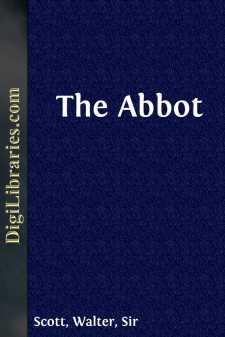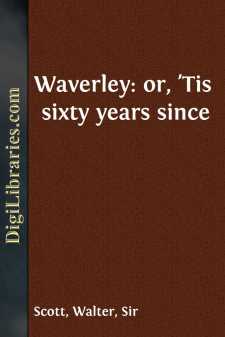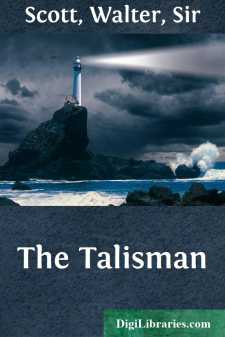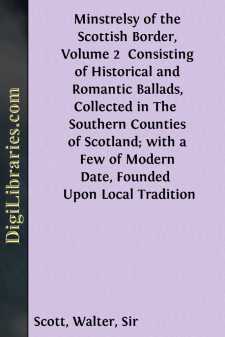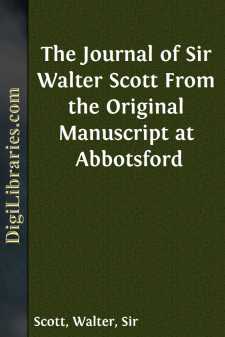Categories
- Antiques & Collectibles 13
- Architecture 36
- Art 48
- Bibles 22
- Biography & Autobiography 813
- Body, Mind & Spirit 142
- Business & Economics 28
- Children's Books 17
- Children's Fiction 14
- Computers 4
- Cooking 94
- Crafts & Hobbies 4
- Drama 346
- Education 46
- Family & Relationships 57
- Fiction 11829
- Games 19
- Gardening 17
- Health & Fitness 34
- History 1377
- House & Home 1
- Humor 147
- Juvenile Fiction 1873
- Juvenile Nonfiction 202
- Language Arts & Disciplines 88
- Law 16
- Literary Collections 686
- Literary Criticism 179
- Mathematics 13
- Medical 41
- Music 40
- Nature 179
- Non-Classifiable 1768
- Performing Arts 7
- Periodicals 1453
- Philosophy 64
- Photography 2
- Poetry 896
- Political Science 203
- Psychology 42
- Reference 154
- Religion 513
- Science 126
- Self-Help 84
- Social Science 81
- Sports & Recreation 34
- Study Aids 3
- Technology & Engineering 59
- Transportation 23
- Travel 463
- True Crime 29
Old Mortality, Volume 1.
by: Walter Scott
Description:
Excerpt
The origin of "Old Mortality," perhaps the best of Scott's historical romances, is well known. In May, 1816, Mr. Joseph Train, the gauger from Galloway, breakfasted with Scott in Castle Street. He brought gifts in his hand,—a relic of Rob Roy, and a parcel of traditions. Among these was a letter from Mr. Broadfoot, schoolmaster in Pennington, who facetiously signed himself "Clashbottom." To cleish, or clash, is to "flog," in Scots. From Mr. Broadfoot's joke arose Jedediah Cleishbotham, the dominie of Gandercleugh; the real place of Broadfoot's revels was the Shoulder of Mutton Inn, at Newton Stewart. Mr. Train, much pleased with the antiques in "the den" of Castle Street, was particularly charmed by that portrait of Claverhouse which now hangs on the staircase of the study at Abbotsford. Scott expressed the Cavalier opinions about Dundee, which were new to Mr. Train, who had been bred in the rural tradition of "Bloody Claver'se."
[The Editor's first acquaintance with Claverhouse was obtained
through an old nurse, who had lived on a farm beside a burn where,
she said, the skulls of Covenanters shot by Bloody Claver'se were
still occasionally found. The stream was a tributary of the
Ettrick.]
"Might he not," asked Mr. Train, "be made, in good hands, the hero of a national romance as interesting as any about either Wallace or Prince Charlie?" He suggested that the story should be delivered "as if from the mouth of Old Mortality." This probably recalled to Scott his own meeting with Old Mortality in Dunnottar Churchyard, as described in the Introduction to the novel.
The account of the pilgrim, as given by Sir Walter from Mr. Train's memoranda, needs no addition. About Old Mortality's son, John, who went to America in 1776 (? 1774), and settled in Baltimore, a curious romantic myth has gathered. Mr. Train told Scott more, as his manuscript at Abbotsford shows, than Scott printed. According to Mr. Train, John Paterson, of Baltimore, had a son Robert and a daughter Elizabeth. Robert married an American lady, who, after his decease, was married to the Marquis of Wellesley. Elizabeth married Jerome Bonaparte! Sir Walter distrusted these legends, though derived from a Scotch descendant of Old Mortality. Mr. Ramage, in March, 1871, wrote to "Notes and Queries" dispelling the myth.
According to Jerome Bonaparte's descendant, Madame Bonaparte, her family were Pattersons, not Patersons. Her Baltimore ancestor's will is extant, has been examined by Old Mortality's great-grandson, and announces in a kind of preamble that the testator was a native of Donegal; his Christian name was William ("Notes and Queries," Fourth Series, vol. vii. p. 219, and Fifth Series, August, 1874). This, of course, quite settles the question; but the legend is still current among American descendants of the old Roxburghshire wanderer.
"Old Mortality," with its companion, "The Black Dwarf," was published on December 1, 1816, by Mr. Murray in London, and Mr. Blackwood in Edinburgh.
The name of "The Author of 'Waverley'" was omitted on the title-page. The reason for a change of publisher may have been chiefly financial (Lockhart, v. 152). Scott may have also thought it amusing to appear as his own rival in a new field. He had not yet told his secret to Lady Abercorn, but he seems to reveal it (for who but he could have known so much about the subject?) in a letter to her, of November 29, 1816. "You must know the Marquis well,—or rather you must be the Marquis himself!" quoth Dalgetty. Here follow portions of the letter:
I do not like the first story, "The Black Dwarf," at all; but the
long one which occupies three volumes is a most remarkable
production. . . . I should like to know if you are of my opinion as
to these new volumes coming from the same hand. . . . I wander about
from nine in the morning till five at night with a plaid about my
shoulders and an immensely large bloodhound at my heels, and stick
in sprigs which are to become trees when I shall have no eyes to
look at them....


